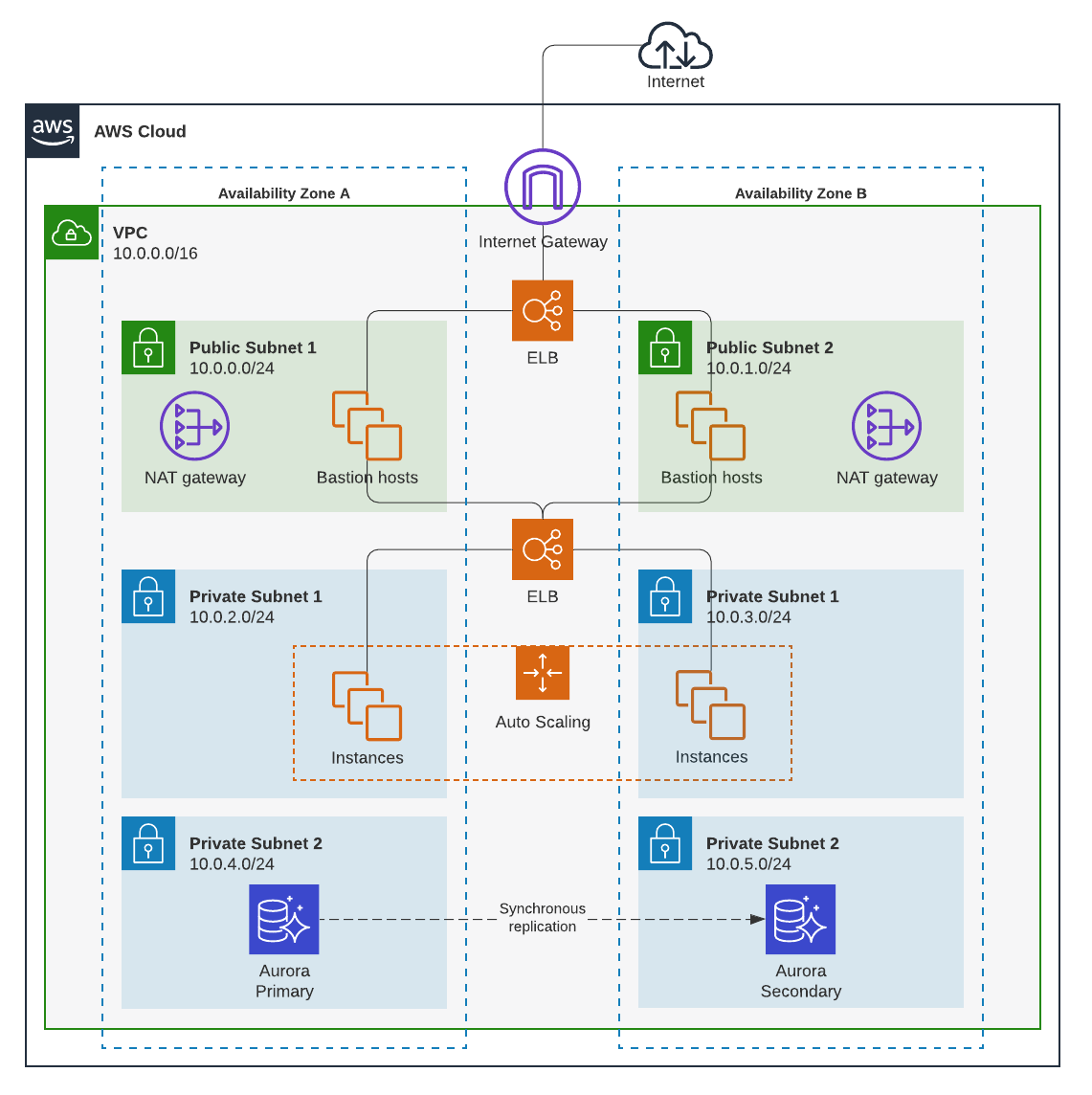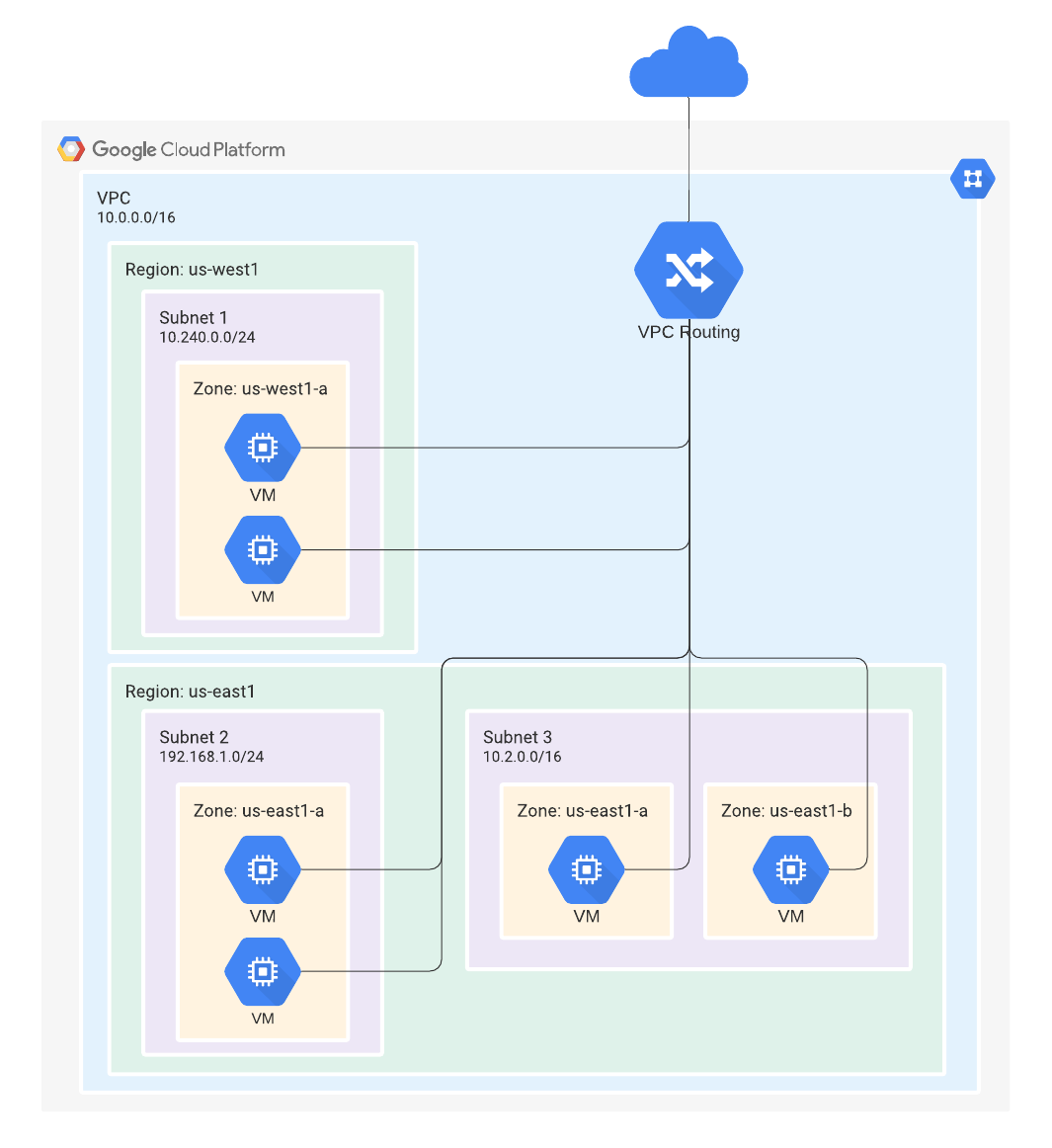
Making the shift to a cloud-enabled workforce
Lucid Content
Reading time: about 9 min
Cloud computing is expected to grow more than six times the rate of general IT spending in 2020. Why such a push for cloud adoption in IT? Because a cloud-enabled IT workforce has the potential to reap significant benefits in agility, service, productivity, and efficiency. However, getting to the cloud isn’t always easy.
Why cloud-enabled IT is the future
Typically, enterprise business applications require significant resources from IT administration to maintain their systems. As IT solutions increase, the overhead for testing, integration, and maintenance has skyrocketed—leaving fewer resources to go towards actually developing strategic business solutions.
That’s where the cloud comes in.
Adopting cloud-enabled processes improves infrastructure management, resulting in better outcomes across the board including:
- Reduced IT overhead costs
- Optimized IT asset usage by scaling processes based on need
- Increased agility, leading to better quality of service and more sophisticated solutions
Adopting a cloud-enabled strategy lets teams standardize system configurations and automate IT processes so that IT teams can focus on what they do best—building and deploying strategic business solutions.
But reaping the benefits of a cloud-enabled workforce requires more than simply moving applications to a cloud environment. A successful cloud transformation relies on strategic investment and commitment.
Discover more tips on how to build a <strong>successful cloud team</strong>.
Learn moreDeveloping a cloud-enabled IT workforce
Shifting to a cloud-native or cloud-enabled environment represents a fundamental transformation in how your IT workforce operates. A move to the cloud will require teams to develop or hire for new skills and create a new culture and strategy in the way teams approach IT.
Use the following tips and best practices to develop a successful cloud-enabled IT staff.
Understand the existing culture
Adopting cloud services should align with your overall organizational strategy and culture. To do this, you must first understand your existing IT culture, including how processes currently work, how easily those processes can be changed, and the maturity of your security and automation practices.
Without a clear picture of your current IT culture, you won’t be able to craft effective and targeted strategies for cloud implementation.
Visuals like process flowcharts and org charts can help you map your current organization and processes so you can see how different roles, departments, and operations work together.
Map your network infrastructure to gain an in-depth understanding of your current system and IT processes. Network diagrams give you a bird’s-eye view of your network’s complex environment and interconnectivity. By visualizing your current processes and systems, you can better understand how things work together and what processes will need to evolve as you migrate to a cloud-enabled solution.

Identify skills that are needed
Creating a cloud-enabled IT workforce will require new and diverse skill sets. For most organizations, bridging those skill gaps means upskilling through a combination of hiring, training, and outsourcing.
Advanced IT and security skills are in growing demand, which means competition for talent is fierce. Most tech organizations have a relatively mature cloud strategy, making it easy to attract top IT candidates. To stay competitive, smaller organizations or those in non-tech industries will need to develop a robust cloud-enablement strategy in order to attract candidates or develop the necessary skills to drive cloud IT operations to push their business forward.
Developing such a strategy will require a thorough understanding of your current business, future goals, and specific cloud needs. As you evaluate your current IT operations, identify the current skills in your workforce and those that you will need to be successful in a cloud-enabled environment.
The specific skills needed will vary between organizations depending on maturity, size, industry, product, etc. However, most businesses will require the following core skill sets to remain competitive:
- Cloud computing and architecture. IT teams need to have a deep knowledge of cloud environments and processes to support a cloud-enabled system. Some skills from on-premise computing will be readily transferable, while other skills must be trained or hired for.
- IT governance and compliance. Cloud governance essentially means managing IT processes for maximum efficiency and value. Governance touches on many parts of the business, including compliance, risk management, and computing. For IT, governance drills down to one primary question: Does it work? IT teams have to make sure cloud computing processes are functioning and meeting the outlined SLAs for business objectives and industry and government compliance standards.
- DevOps. DevOps engineers wear many hats that can span cloud, development, data, continuous delivery, and operations. All important specializations for supporting an agile cloud-enabled workforce.
- Artificial intelligence. An increasing portion of the cloud is being built with plug-and-play AI applications that require little human management (such as chatbots and virtual assistants). However, for companies that want a competitive advantage, they will need to invest in AI development services and hire for cloud-based AI development skills such as AI programmers and data scientists to accelerate key processes and develop AI services at scale.
- Cybersecurity. The skills shortage in cybersecurity threatens safe cloud adoption and management. Companies must be proactive in hiring and developing cloud security skills to protect their business from data breaches, data loss, service traffic hijacking, etc.
- Virtualization. This is the technology that supports the cloud environment. In addition to supporting cloud systems, virtualization has its own benefits including creating virtual machines to test new applications or set up a production environment.
Keep in mind that cloud technology continues to evolve rapidly—the demand for new skills and expectations will arise over time. This consideration should be built into your ongoing cloud enablement strategy to ensure long-term sustainability and competitiveness in your IT business operations.
Conduct a skills gap analysis
Once you have identified the skills needed, you can conduct a skills gap analysis to find out what skills you already have and what skills you will need to hire, train, or outsource for.
A skills gap analysis will not only help you identify gaps in your skill sets but also uncover opportunities to improve training and recruitment practices in your IT organization.
To conduct a thorough skills gap analysis you will need to employ several strategies including:
- Employee surveys
- Performance reviews
- Interviews
- Management assessments
A skills gap analysis is a critical tool in building a strong cloud-enabled workforce.
As you evaluate your organization, you can also uncover weaknesses in your organizational structure, such as areas where you have the right skills but they aren’t being leveraged in the right places. These insights create opportunities to utilize your current workforce more efficiently and develop strategies for more effective operations and processes down the road.
For instance, while an on-premise environment looks different from a cloud network, you don’t necessarily have to start from scratch with your IT support team. Take advantage of training tools like visual mapping to compare the two computing environments and help your IT specialists make connections more easily.
Compare your on-premise infrastructure diagram and your new cloud architecture diagram to highlight the differences and similarities in processes and systems. Visualizing the cloud architecture helps your IT team contextualize the new systems and orient themselves to cloud processes, making it easier to identify gaps in their knowledge and transition from one system to another.
Create a plan to bridge the gaps
Next, create a strategy to bridge existing skills gaps and put your reimagined IT structure into place. Use the data and results from your analyses to identify opportunities for change and prioritize solutions.
For example, if you are restructuring or rearranging your teams to better leverage skills across the organization, you will need a communication strategy, change management plan, and a recruitment and onboarding process for new hires and team transfers.
Take advantage of solutions like Lucidchart to streamline your onboarding processes and training. Lucidchart makes it easy to map out processes, workflows, and organizational structures so employees can quickly understand how things work and where they fit in.
For example, automatically generate cloud architecture diagrams through Lucidchart Cloud Insights by connecting with your cloud provider account. Visualizing your architecture can quickly get employees up to speed on your current systems. Our brains process visuals like these 60,000 times faster than text—with higher retention too. So your IT team can learn and understand complex systems like cloud architecture much faster.

Use flowcharts to map your new cloud processes and put your systems and roles into context. These visuals are especially helpful for troubleshooting cloud issues. Use process diagrams to visualize and organize cloud components so IT can quickly pinpoint problem areas.
Implementing and sustaining long-term change
With your plans outlined and a strategy in place, it’s time to implement your cloud transformation. You want to implement changes as seamlessly as possible while also making sure new structures and strategies yield sustainable results.
Easier said than done, of course.
Successful execution will require a multi-pronged approach, including:
- Training and hiring for immediate needs
- Creating a long-term training, development, and upskilling program to ensure your workforce continually adapts to changing requirements
- Maintaining a strong recruitment program so you can attract the right people to the right roles over time
Be sure to secure buy-in from key stakeholders, including IT senior management to lead, support, and drive your initiatives on the ground. Without commitment from your teams and leadership, changes you attempt will not be as effective or successful.
Clarify how you will define and measure success. For a newly cloud-enabled workforce, success could mean rewarding progress towards standardization and automation over availability.
As always, communication will play a key role in your ability to sustain and support a cloud-enabled workforce. The cloud is a technical and complex environment. Add to that the rapid evolution of cloud technology and applications, and it is easy for your IT workforce to get bogged down in the weeds and fall behind.
Streamline the digital transformation process and your ongoing cloud-enabled workflows through clear and consistent communication. Visuals can help you do this every step of the way.
Cloud architecture diagrams and process flow templates can streamline training and onboarding processes through the recruiting and hiring phase. Use Lucidchart integrations to include diagrams in your training resources on Confluence, and create process flows to help teams learn and visualize new cloud-specific processes.
Get everyone on the same page quickly using centralized cloud architecture diagrams. Cloud architecture diagrams make it easier to understand complex cloud environments so you don’t get stuck reviewing thousands of lines of code and text-heavy spreadsheets. Plus, teams can collaborate in real time through Lucidchart by sharing and commenting directly on the visual to pinpoint areas that need attention or more clarity.
Building a cloud-enabled workforce will take time and commitment. But with careful planning, communication, and a deep understanding of your current culture and future vision, you can reap the benefits of increased scalability, agility, efficiency, and cost savings.

Get ready to build your <strong>successful cloud team</strong> with these tips and ideas.
Learn moreAbout Lucidchart
Lucidchart, a cloud-based intelligent diagramming application, is a core component of Lucid Software's Visual Collaboration Suite. This intuitive, cloud-based solution empowers teams to collaborate in real-time to build flowcharts, mockups, UML diagrams, customer journey maps, and more. Lucidchart propels teams forward to build the future faster. Lucid is proud to serve top businesses around the world, including customers such as Google, GE, and NBC Universal, and 99% of the Fortune 500. Lucid partners with industry leaders, including Google, Atlassian, and Microsoft. Since its founding, Lucid has received numerous awards for its products, business, and workplace culture. For more information, visit lucidchart.com.
